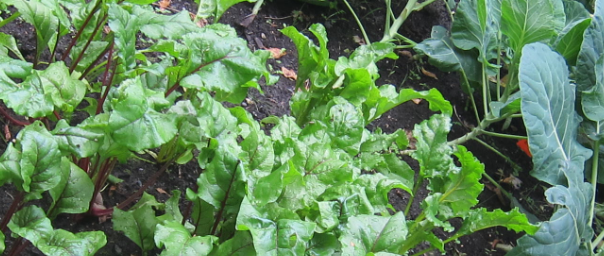About two months after planting the hugelkultur for the 2015 growing season, things are definitely starting to take off.
(If you aren’t sure what a hugelkultur is, it’s a gardening technique that combines a raised bed with long-term composting. Here’s my post about building the hugelkultur last fall (2014).)
As the plants start to get bigger and I’m weeding or thinning, those stepping bricks are so convenient to have. Good call putting those in early, Amy!
I planted rows of beets that I started indoors from seed. I read that root vegetables don’t usually like to be started indoors and transplanted, but and they seem happy. My hand is in the photo for size reference.
Other than the green pepper in the upper left of this photo, all my plants have plenty of flowers, but no fruit yet. Crossing my fingers the first frost comes late in Anchorage this year so my plants have time to mature (and I get a harvest!).
The kale bed is also doing really well. I have it covered with old pieces of fencing and wire to keep the chickens out. Chickens get into everything!
I wrote brief notes about each vegetable on the orange flags, which have been extremely helpful remembering what variety it is, whether I started it indoors and transplanted or went direct seed, and how many rows I planted. All of that info seems crystal clear the week you plant, then as the season progresses, it’s hard to remember without cheat notes.
In the front yard, here are the tomato plants on the left and the onion patch on the right side. The tomatoes have plenty of flowers, but no tomatoes yet.
Many of the onions have the top of their little bulb pushing up through the soil. I’ve been having issues with birds plucking them up from the ground, more so when the plants were younger. There are plenty of Stellars Jays and Magpie in our area. They’re both beautiful but extremely curious and destructive birds. They have fun plucking seedlings from the ground, then don’t eat them.
That’s it for now. :)






